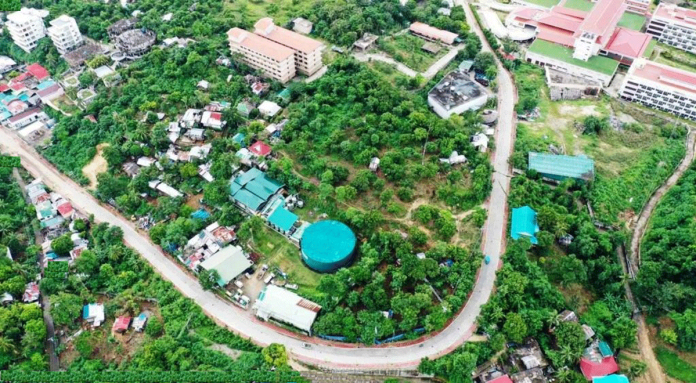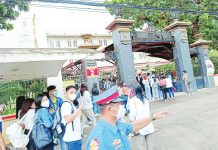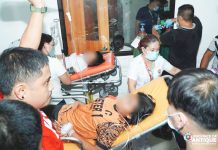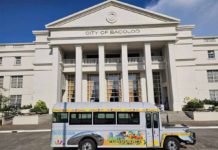
BORACAY – Four years after President Rodrigo Duterte committed to restore the environmental integrity of this world-renowned island, the promise is close to being fulfilled.
“We’re moving towards that direction,” said Natividad Bernardino, general manager of the Boracay Inter-Agency Rehabilitation Management Group (BIARMG).
BIARMG is the implementing arm of the Boracay Inter-Agency Task Force (BIATF), which was created under Executive Order 53 signed by the President on May 8, 2018 to oversee the rehabilitation of the island.
Bernardino attributed the improvement of the island to political will and the collaboration between national government agencies and the local government.
“We are compelled to work together based on the instruction of the government,” she said.
As of June this year, 81 percent or 273 of the 339 commercial and residential establishments that encroached on the 25+5-meter beach easement have been demolished.
“We prioritize to demolish commercial establishments over residential,” Bernardino said, adding that they go slow with the residential establishments because those who would be affected belong to the poor sector such as fisherfolk who need to be relocated.
They have demolished 83 percent or 1,022 of the 1,230 structures identified to be affected by the 12-meter road easement as a result of the road widening project.
Two of the nine wetlands in Boracay occupied by illegal settlers have been cleared, she added.
In wetland No. 4, a total of 13 structures were demolished and the area has been converted into the Balabag Wetland Park while 131 illegal structures on wetland No. 6 in Barangay Manoc-manoc have been removed.
A total of 31 families, known to be native Boracaynons from Wetland No. 6, have received their Certificate of Land Ownership Award under the Comprehensive Agrarian Reform Program of the Department of Agrarian Reform.
“They now have their own land in Angol Point, Barangay Manoc-manoc,” Bernardino said.
BETTER WATER QUALITY
Water quality in the island’s main tourism beach known as “White Beach” is now compliant while the one referred to by Duterte as a cesspool at Bulabog Beach is now also up to water quality standards, she said.
“We have various parameters for water quality. For fecal coliform, the acceptable standards should not be more than 100 most probable number per 100 milliliters (MPN/100 ml),” Bernardino explained but did not elaborate on how many times they conduct the testing.
Big accommodation establishments or those with more than 40 rooms located at the White Beach and more than 50 rooms for those outside the White Beach have sewerage treatment plants (STP).
Of the 158 big accommodation establishments, 151 are compliant while the other seven no longer have the intention to operate, she said.
“They could not operate if they don’t comply with this memorandum order,” Bernardino said, referring to Memorandum Circular 2018-06 issued by Environment Secretary Roy Cimatu on June 26, 2018, which requires each establishment in the long beach area of Boracay to have an STP.
ROAD PROJECTS
The rehabilitation also addressed the flooding issue, particularly at the main road, with the installation of a new drainage system by the Tourism Infrastructure and Enterprise Zone Authority (TIEZA).
The drainage system, which involves five different projects and several pumping stations with a total cost of P1.2 billion, is 50-percent complete.
Hopefully, the project, which is already fully funded, will be completed next year amid the challenge of the pandemic, Bernardino said.
Meanwhile, the completion of the 21.643-km. circumferential road is dependent on the budget of the Department of Public Works and Highways (DPWH).
She said if they would merely rely on their regular allocation, it would be impossible for them to complete the entire stretch next year.
In a separate interview, engineer Elsie Sabay, chief of the construction division of DPWH Region 6, said as of July 15 this year, 87.71 percent of their funded section worth PHP1.07 billion have been completed.
“The total length of the Boracay circumferential, which is our main road that connects Cagban Pier to the proper of resorts, is 21.643 km.,” she said.
Once completed, the travel time is expected to be reduced from 40 minutes to 45 minutes from the present one hour and 15 minutes.
The DPWH road project included the construction of drainage, sidewalks with paving blocks/stamped concrete street lighting, tree planting and sprigging, pavement markings, and the provision of features for loading/unloading with ramps for persons with disabilities (PWDs) along the 12-meter road right of way. (PNA)






